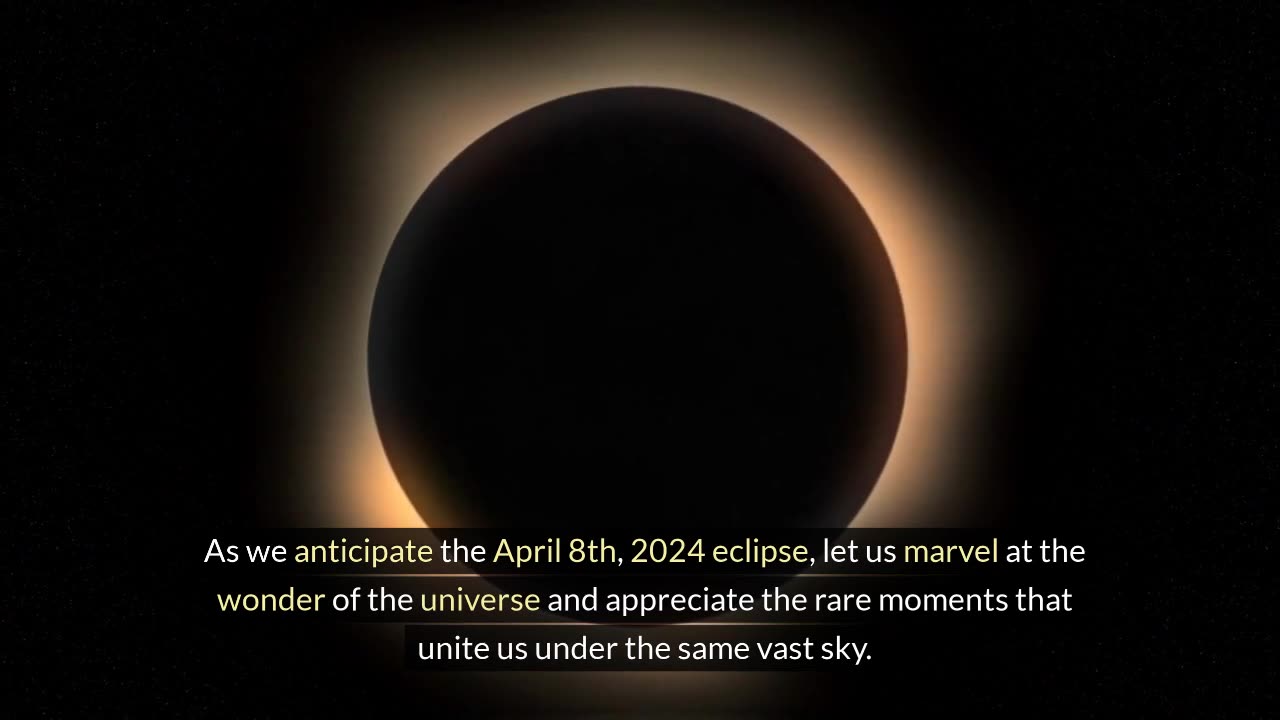Premium Only Content

Total Eclipse vs Partial Eclipse - What's the Difference Anyway??
ECLIPSE MERCH AVAILABLE: https://totaleclipse2024.curatedspot.com/products/bestsellingshirts
Eclipses, those rare cosmic events, offer captivating displays of nature's grandeur. Among them, partial and total eclipses stand out, each offering unique experiences.
During a partial eclipse, the moon partially covers the sun, leading to a subtle dimming of sunlight. It's a reminder of the celestial ballet unfolding above us, showcasing the harmonious interplay of celestial bodies.
In contrast, a total eclipse is unparalleled. As the moon perfectly aligns between the Earth and the sun, it casts a shadow, known as the umbra, onto the Earth's surface. Lucky viewers within this shadow experience totality, witnessing the sun completely obscured by the moon. During this brief but breathtaking moment, the sky darkens to twilight hues, revealing stars and planets usually hidden by the sun's brilliance. Birds may roost, temperatures drop, and an otherworldly stillness envelops the landscape.
The upcoming April 8th, 2024 total eclipse promises to be exceptional. It will traverse a path across North America, offering millions the opportunity to witness totality. Cities like Dallas, Indianapolis, and Buffalo will experience complete obscuration of the sun, providing a rare opportunity for residents and travelers alike. Furthermore, advancements in technology and social media mean that this eclipse will be more accessible and widely observed than ever before.
While both partial and total eclipses offer glimpses into the cosmic dance, the experience of totality is incomparable. As we anticipate the April 8th, 2024 eclipse, let us marvel at the wonder of the universe and appreciate the rare moments that unite us under the same vast sky.
ECLIPSE MERCH AVAILABLE: https://totaleclipse2024.curatedspot.com/products/bestsellingshirts
-
 2:12:46
2:12:46
TheSaltyCracker
4 hours agoLefties Think Elon Stole Election ReeEEeE Stream 11-10-24
161K104 -
 1:16:52
1:16:52
vivafrei
4 hours agoNEW STREAM! Sorry peeps
108K30 -
 LIVE
LIVE
SNEAKO
4 hours agoCheesur edate, Jake Shields on election
5,408 watching -
 39:34
39:34
Nerdrotic
6 hours ago $16.03 earnedAirbursts with Dr Malcolm LeCompte & Giants and Ancient Civilizations with Hugh Newman
68K5 -
 1:03:38
1:03:38
vivafrei
13 hours agoElection RECAP! Long-Count Chicanery! FULL Jan. 6 Pardons! Let's Mock Lichtman & MORE! Viva Frei
130K145 -
 LIVE
LIVE
Vigilant News Network
7 hours agoDoctors Drop Post-Election COVID Bombshell | Media Blackout
5,102 watching -
 14:13
14:13
Scammer Payback
12 days agoTelling Scammers Their Address
135K82 -
 5:43:21
5:43:21
Barstool Gambling
11 hours agoBig Cat and Co Sweat Out the Week 10 Sunday Slate | Barstool Gambling Cave
99.5K3 -
 2:49:36
2:49:36
The Jimmy Dore Show
2 days agoRumble Time Live w/ Jimmy Dore & Special Guests Roseanne Barr, Dr. Drew, Drea de Matteo & More!
564K663 -
 17:17
17:17
DeVory Darkins
1 day agoKamala Post-Election BOMBSHELL Exposes $1 BILLION Campaign DISASTER
92.1K175